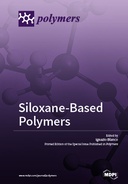Explore

This book, a collection of 12 original contributions and 4 reviews, provides a selection of the most recent advances in the preparation, characterization, and applications of polymeric nanocomposites comprising nanoparticles. The concept of nanoparticle-reinforced polymers came about three decades ago, following the outstanding discovery of fullerenes and carbon nanotubes. One of the main ideas behind this approach is to improve the matrix mechanical performance. The nanoparticles exhibit higher specific surface area, surface energy, and density compared to microparticles and, hence, lower nanofiller concentrations are needed to attain properties comparable to, or even better than, those obtained by conventional microfiller loadings, which facilitates processing and minimizes the increase in composite weight. The addition of nanoparticles into different polymer matrices opens up an important research area in the field of composite materials. Moreover, many different types of inorganic nanoparticles, such as quantum dots, metal oxides, and ceramic and metallic nanoparticles, have been incorporated into polymers for their application in a wide range of fields, ranging from medicine to photovoltaics, packaging, and structural applications.
This book is included in DOAB.
Why read this book? Have your say.
You must be logged in to comment.
Rights Information
Are you the author or publisher of this work? If so, you can claim it as yours by registering as an Unglue.it rights holder.Downloads
This work has been downloaded 449 times via unglue.it ebook links.
- 374 - pdf (CC BY-NC-ND) at Unglue.it.
Keywords
- 29Si-NMR
- 3D porous network
- amphiphilic
- anti-bioadhesion
- basalt fibre
- Bioactivity
- borate
- carbon content
- ceramizable mechanism
- ceramizable silicone rubber
- chlorogenic acid
- Coatings
- composite
- cross-linking
- dental resin
- diethyl carbonate
- Drug delivery
- drug release
- encapsulant
- Fabrication
- fillers
- fluorinated siloxane resin
- FTIR
- halloysite
- hardness
- high molecular weight
- hybrid hydrogel
- hybrids
- hydrolytic polycondensation
- hydrophilic
- hyperbranched poly(methylhydrosiloxanes)
- low surface energy materials
- MAPOSS
- Mechanical properties
- methacryl POSS
- Morphology
- mortar
- multielectrode array (MEA)
- Nanomedicine
- Nanoparticles
- nanosilica
- non-releasable
- organosilane
- PDMS
- PDMS etching
- plateau-shaped electrode
- poly(dimethylsiloxanes)
- poly(ethylene glycol) (PEG)
- polydimethylsiloxane
- polyhedral oligomeric silsesquioxanes
- polysiloxanes
- quartz microcrystal
- recessed electrode
- refractive index
- roughness
- scratch resistance
- shrinkage
- Silicon
- sol-gel
- spinal cord signal recording
- sugar templating process
- surface
- surface free energy
- Surface modification
- swelling
- TG
- TG-FTIR
- theranostics
- thermal conductivity
- Thermal stability
- topology of polysiloxane chains
- ultraviolet (UV) curable coatings
- underexposure
- X-ray (Micro-CT) microtomography
Links
DOI: 10.3390/books978-3-03897-126-9Editions


